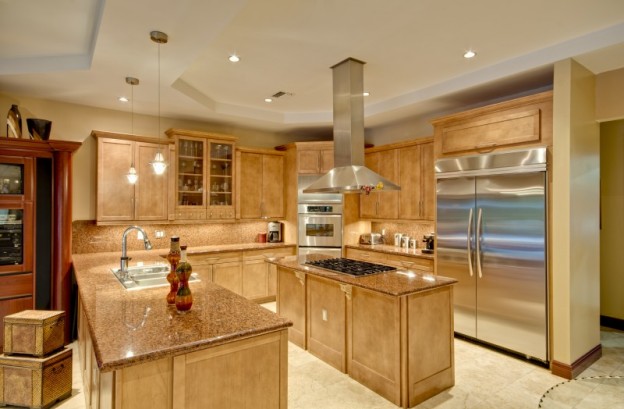
Resources 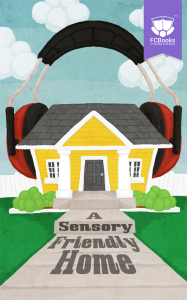 This post is a chapter from the new E-book: E-book: A Sensory Friendly Home. This E-book has over 200 great tips on making your Kitchen, Living Room, Dining Room, Bedroom and Bathroom sensory friendly.
Purchase at: http://www.friendshipcircle.org/blog/ebooks/
This post is a chapter from the new E-book: E-book: A Sensory Friendly Home. This E-book has over 200 great tips on making your Kitchen, Living Room, Dining Room, Bedroom and Bathroom sensory friendly.
Purchase at: http://www.friendshipcircle.org/blog/ebooks/
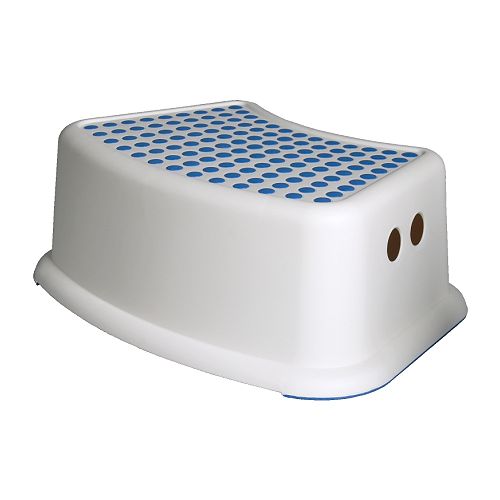 Photo credit: IKEA.com[/caption]
1 A non-slip stool is necessary when people of different heights are working in the same kitchen.
2. Sharp, breakable or toxic items placed out of reach or in a locked cabinet - this means our knives are on a top shelf.
3. Non-skid flooring, such as vinyl, cork or rubber tiles, can reduce the risk of slipping and falling in the kitchen.
4. An automatic stove shutoff can be installed by an electrician.
5. A faucet scald guard reduces the flow of hot water to the sink, and it provides an additional level of burn prevention after a homeowner manually lowers the temperature of the home’s hot water heater.
Photo credit: IKEA.com[/caption]
1 A non-slip stool is necessary when people of different heights are working in the same kitchen.
2. Sharp, breakable or toxic items placed out of reach or in a locked cabinet - this means our knives are on a top shelf.
3. Non-skid flooring, such as vinyl, cork or rubber tiles, can reduce the risk of slipping and falling in the kitchen.
4. An automatic stove shutoff can be installed by an electrician.
5. A faucet scald guard reduces the flow of hot water to the sink, and it provides an additional level of burn prevention after a homeowner manually lowers the temperature of the home’s hot water heater.
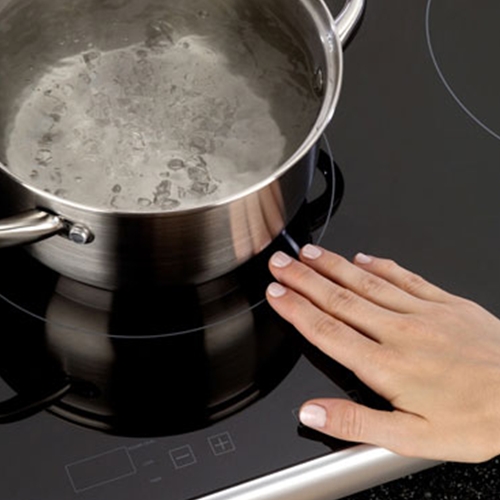 6 A smoke detector and fire extinguisher are essential for any kitchen.
7. An induction cooktop heats food by creating an oscillating, high frequency electromagnetic field, but is not hot to touch. This can significantly reduce the risk of burns in the kitchen.
8. Lighting directed to the work space is a wonderful prevention tool for kitchen accidents. We have LED floodlights directly over our sink and work space.
6 A smoke detector and fire extinguisher are essential for any kitchen.
7. An induction cooktop heats food by creating an oscillating, high frequency electromagnetic field, but is not hot to touch. This can significantly reduce the risk of burns in the kitchen.
8. Lighting directed to the work space is a wonderful prevention tool for kitchen accidents. We have LED floodlights directly over our sink and work space.
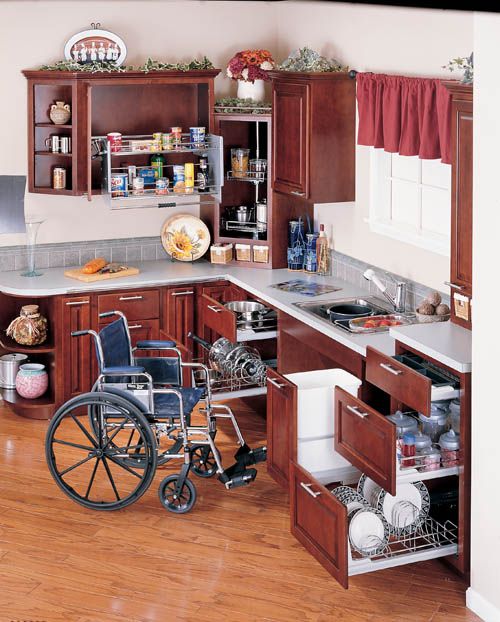 Photo credit: www.aloneeagle.com[/caption]
14. Wood cabinets in warm tones and other natural materials for the floor and countertop have been found to have a relaxing effect in institutional kitchens. Consider the emotional impact when choosing cabinets, flooring and countertops.
15. Live plants and herbs also have a calming effect in kitchens, and they’re a great educational tool.
16. Cheerful colors can also help create a positive and creative mood in the kitchen. Consult with family members about colors when choosing curtains, tablecloths and tiles.
17. Windows facing outdoors provide natural light and have a calming effect on people working in the kitchen, especially if the window overlooks some trees or a green area.
With these design ideas in mind, the kitchen can become a welcoming place for practicing life skills and experimenting with the senses. Positive kitchen experiences can lead to improved memory by “over-learning” everyday tasks and procedures, as well as combining memories with unique sensory input. So get started today on making those memories in your sensory-friendly kitchen!
Photo credit: www.aloneeagle.com[/caption]
14. Wood cabinets in warm tones and other natural materials for the floor and countertop have been found to have a relaxing effect in institutional kitchens. Consider the emotional impact when choosing cabinets, flooring and countertops.
15. Live plants and herbs also have a calming effect in kitchens, and they’re a great educational tool.
16. Cheerful colors can also help create a positive and creative mood in the kitchen. Consult with family members about colors when choosing curtains, tablecloths and tiles.
17. Windows facing outdoors provide natural light and have a calming effect on people working in the kitchen, especially if the window overlooks some trees or a green area.
With these design ideas in mind, the kitchen can become a welcoming place for practicing life skills and experimenting with the senses. Positive kitchen experiences can lead to improved memory by “over-learning” everyday tasks and procedures, as well as combining memories with unique sensory input. So get started today on making those memories in your sensory-friendly kitchen!
17 Features For A Sensory-Friendly, Therapeutic Kitchen
 This post is a chapter from the new E-book: E-book: A Sensory Friendly Home. This E-book has over 200 great tips on making your Kitchen, Living Room, Dining Room, Bedroom and Bathroom sensory friendly.
Purchase at: http://www.friendshipcircle.org/blog/ebooks/
This post is a chapter from the new E-book: E-book: A Sensory Friendly Home. This E-book has over 200 great tips on making your Kitchen, Living Room, Dining Room, Bedroom and Bathroom sensory friendly.
Purchase at: http://www.friendshipcircle.org/blog/ebooks/
In many homes, the kitchen is the heart of family life. When a family member has special needs, the kitchen may take on additional importance due to its role in teaching life skills, sensory integration and other therapeutic goals.
Today I was teaching my son how to make a stir-fry for lunch, and I realized that our kitchen has been completely re-organized over the years to accommodate his needs. Our top priority in the kitchen has always been safety, followed by accessibility and comfort. Here is a description of 17 features that can turn any kitchen into a therapeutic and educational environment.
Safety
[caption id="attachment_17976" align="alignright" width="240"] Photo credit: IKEA.com[/caption]
1 A non-slip stool is necessary when people of different heights are working in the same kitchen.
2. Sharp, breakable or toxic items placed out of reach or in a locked cabinet - this means our knives are on a top shelf.
3. Non-skid flooring, such as vinyl, cork or rubber tiles, can reduce the risk of slipping and falling in the kitchen.
4. An automatic stove shutoff can be installed by an electrician.
5. A faucet scald guard reduces the flow of hot water to the sink, and it provides an additional level of burn prevention after a homeowner manually lowers the temperature of the home’s hot water heater.
Photo credit: IKEA.com[/caption]
1 A non-slip stool is necessary when people of different heights are working in the same kitchen.
2. Sharp, breakable or toxic items placed out of reach or in a locked cabinet - this means our knives are on a top shelf.
3. Non-skid flooring, such as vinyl, cork or rubber tiles, can reduce the risk of slipping and falling in the kitchen.
4. An automatic stove shutoff can be installed by an electrician.
5. A faucet scald guard reduces the flow of hot water to the sink, and it provides an additional level of burn prevention after a homeowner manually lowers the temperature of the home’s hot water heater.
 6 A smoke detector and fire extinguisher are essential for any kitchen.
7. An induction cooktop heats food by creating an oscillating, high frequency electromagnetic field, but is not hot to touch. This can significantly reduce the risk of burns in the kitchen.
8. Lighting directed to the work space is a wonderful prevention tool for kitchen accidents. We have LED floodlights directly over our sink and work space.
6 A smoke detector and fire extinguisher are essential for any kitchen.
7. An induction cooktop heats food by creating an oscillating, high frequency electromagnetic field, but is not hot to touch. This can significantly reduce the risk of burns in the kitchen.
8. Lighting directed to the work space is a wonderful prevention tool for kitchen accidents. We have LED floodlights directly over our sink and work space.
Accessibility
9. Everyone needs space for maneuvering, but if a person has a mobility impairment, then wider spaces are needed to work efficiently in a kitchen. 10. Counters at various heights allow everyone in the family to have a workspace at just the right height. 11. A side-by-side refrigerator/freezer provides access at multiple heights. 12. Frequent-use items should be placed at the most accessible level - we keep cups and dishes in a low cupboard so that our son can unload the dishwasher without straining to reach. We also keep healthy snacks and sensory items, such as a tub of dry rice and beans, at a lower level that he can reach. Give each family member a tour so that he or she knows where to find favorite items. Identifying and fulfilling personal needs independently is a significant life skill. 13. Keep tea, cocoa, spices and dry herbs at an accessible level so that family members can explore various fragrances. When we moved our spices, we were surprised to learn that our son loves paprika and every type of pepper. Sensory integration begins in the kitchen!Decor
[caption id="attachment_17979" align="alignright" width="350"] Photo credit: www.aloneeagle.com[/caption]
14. Wood cabinets in warm tones and other natural materials for the floor and countertop have been found to have a relaxing effect in institutional kitchens. Consider the emotional impact when choosing cabinets, flooring and countertops.
15. Live plants and herbs also have a calming effect in kitchens, and they’re a great educational tool.
16. Cheerful colors can also help create a positive and creative mood in the kitchen. Consult with family members about colors when choosing curtains, tablecloths and tiles.
17. Windows facing outdoors provide natural light and have a calming effect on people working in the kitchen, especially if the window overlooks some trees or a green area.
With these design ideas in mind, the kitchen can become a welcoming place for practicing life skills and experimenting with the senses. Positive kitchen experiences can lead to improved memory by “over-learning” everyday tasks and procedures, as well as combining memories with unique sensory input. So get started today on making those memories in your sensory-friendly kitchen!
Photo credit: www.aloneeagle.com[/caption]
14. Wood cabinets in warm tones and other natural materials for the floor and countertop have been found to have a relaxing effect in institutional kitchens. Consider the emotional impact when choosing cabinets, flooring and countertops.
15. Live plants and herbs also have a calming effect in kitchens, and they’re a great educational tool.
16. Cheerful colors can also help create a positive and creative mood in the kitchen. Consult with family members about colors when choosing curtains, tablecloths and tiles.
17. Windows facing outdoors provide natural light and have a calming effect on people working in the kitchen, especially if the window overlooks some trees or a green area.
With these design ideas in mind, the kitchen can become a welcoming place for practicing life skills and experimenting with the senses. Positive kitchen experiences can lead to improved memory by “over-learning” everyday tasks and procedures, as well as combining memories with unique sensory input. So get started today on making those memories in your sensory-friendly kitchen! 


